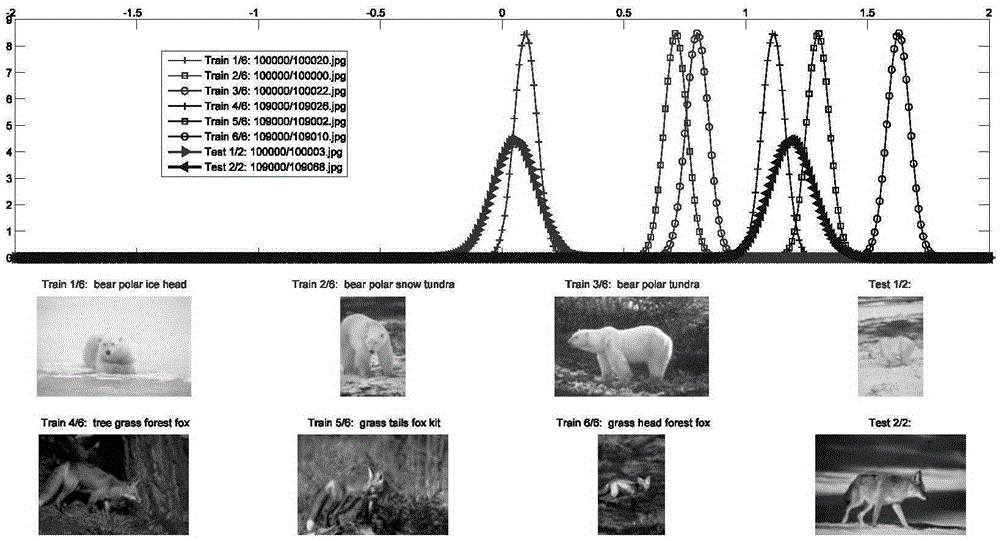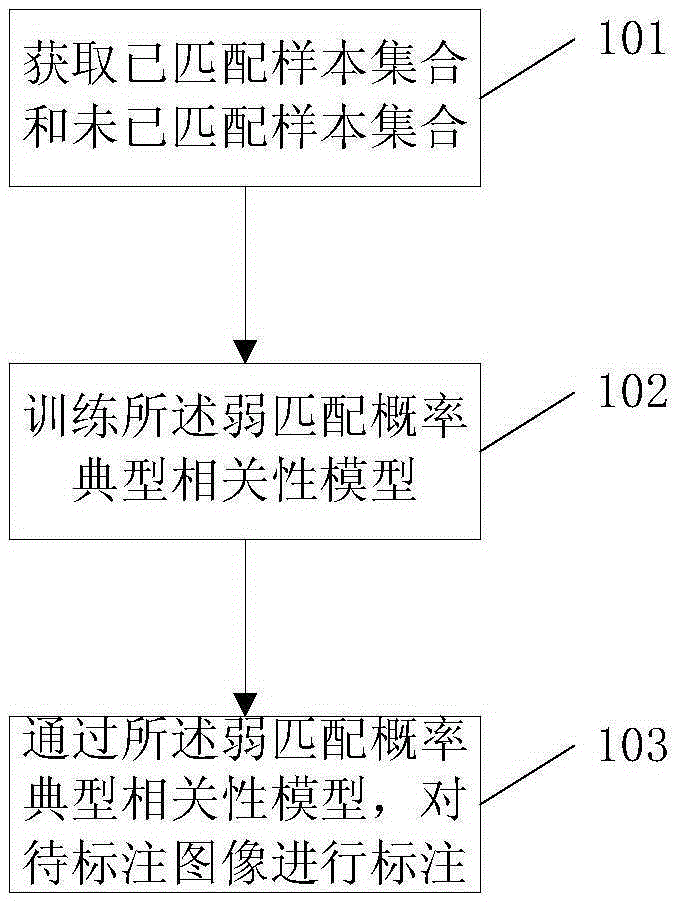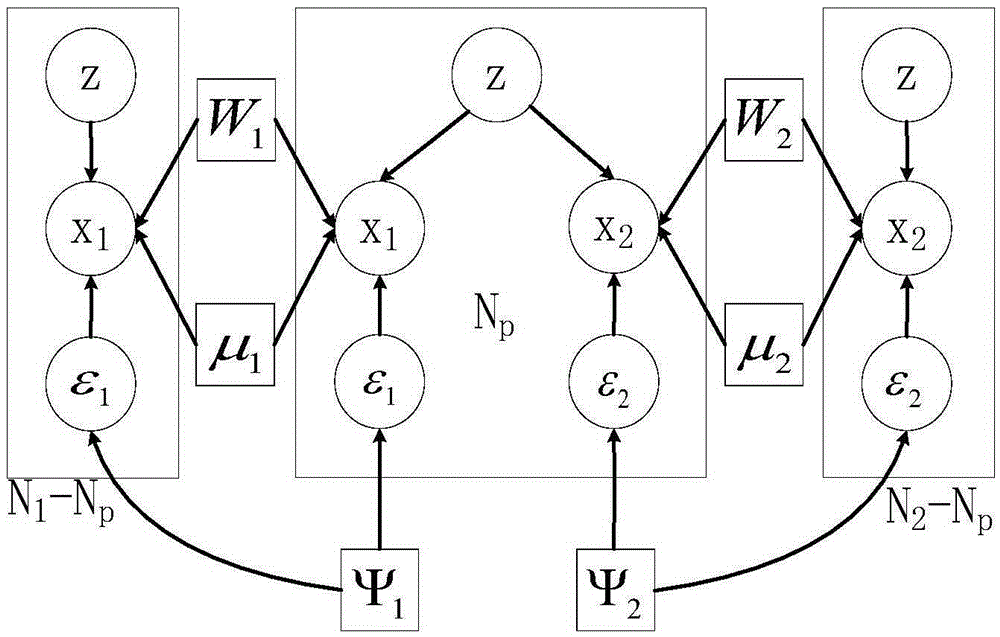Image annotation method based on weak matching probability canonical correlation model
A typical correlation and matching probability technology, which is applied in the field of image annotation based on the typical correlation model of weak matching probability, can solve problems such as missing data, out-of-sync sensor sampling frequency, and time-consuming and laborious manual matching.
- Summary
- Abstract
- Description
- Claims
- Application Information
AI Technical Summary
Problems solved by technology
Method used
Image
Examples
specific Embodiment
[0100] The following are specific embodiments of the present invention, as follows:
[0101] Experiments on artificial weak matching multimodal datasets are as follows:
[0102] In order to verify the effectiveness of the SemiPCCA model, we construct the following artificial data sets: sample set subject to N(0,I d ), where the dimension d=2, the number of samples N=300, the complete set of matching samples Obtained by constructing,
[0103] x 1 = T 1 z + ϵ 1 , T ∈ R m 1 × d
[0104] x 2 = T 2 z + ϵ 2 , T 2 ...
PUM
 Login to View More
Login to View More Abstract
Description
Claims
Application Information
 Login to View More
Login to View More - R&D
- Intellectual Property
- Life Sciences
- Materials
- Tech Scout
- Unparalleled Data Quality
- Higher Quality Content
- 60% Fewer Hallucinations
Browse by: Latest US Patents, China's latest patents, Technical Efficacy Thesaurus, Application Domain, Technology Topic, Popular Technical Reports.
© 2025 PatSnap. All rights reserved.Legal|Privacy policy|Modern Slavery Act Transparency Statement|Sitemap|About US| Contact US: help@patsnap.com



